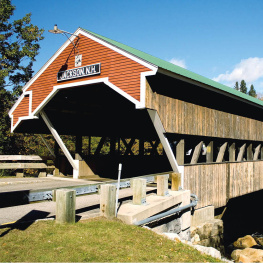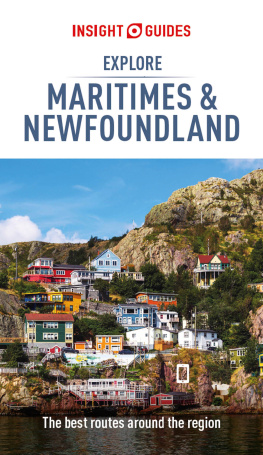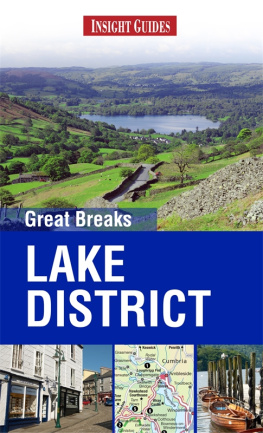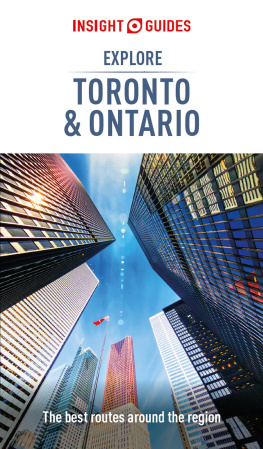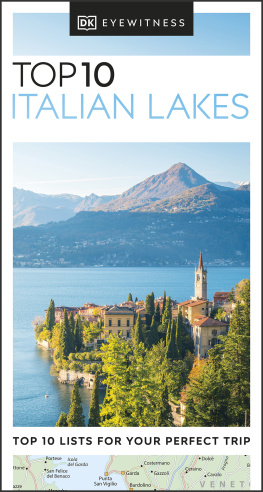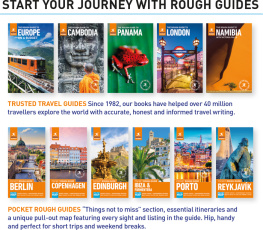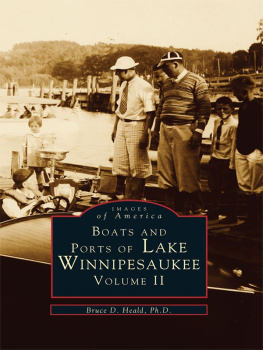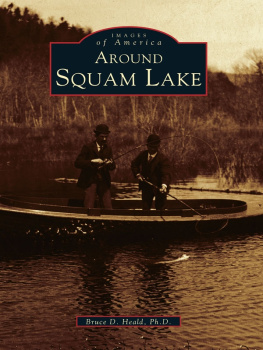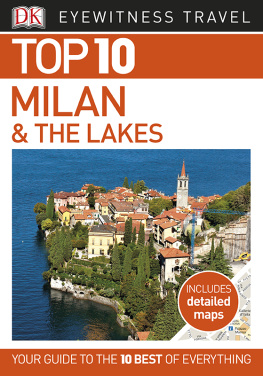How To Use This E-Book
Getting Around This e-Book
This short Insight Guide e-book has been specially curated to give you inspiration and planning advice for your visit to Lake Garda, and is the perfect mini-guide to inform your travel to Italy.
Maps
All key attractions and sights in Lake Garda are numbered and cross-referenced to high-quality maps. Wherever you see the reference [map], tap once to go straight to the related map. You can also double-tap any map for a zoom view.
Images
Youll find beautiful high-resolution images that capture the essence of Lake Garda. Simply double-tap an image to see it in full-screen.
About Insight Guides
Insight Guides have more than 40 years experience of publishing high-quality, visual travel guides. We produce 400 full-colour titles, in both print and digital form, covering more than 200 destinations across the globe, in a variety of formats to meet your different needs.
Insight Guides are written by local authors who use their on-the-ground experience to provide the very latest information; their local expertise is evident in the extensive historical and cultural background features. All the reviews in Insight Guides are independent; we strive to maintain an impartial view. Our reviews are carefully selected to guide to you the best places to stay and eat, so you can be confident that when we say a restaurant or hotel is special, we really mean it.
Like all Insight Guides , this e-book contains hundreds of beautiful photographs to inspire and inform your travel. We commission most of our own photography, and we strive to capture the essence of a destination using original images that you wont find anywhere else.
2013 Apa Publications (UK) Ltd

Lake Garda
The largest and easternmost of the lakes, Garda is bordered by three different regions: Lombardy, Trentino and the Veneto. The scenery is enormously diverse, from the fjord-like north, where the Brenta Dolomites drop sheer into the water, to the gentle hills of vineyards and olive groves, and the sea-like southern basin, fringed by beaches. Sheltered by the mountains, it enjoys an equable climate and luxuriant vegetation along its shores. Garda is the cleanest lake and the most popular for swimming, windsurfing and sailing. The lake is a favourite playground of German and Austrian tourists and in season you can expect crowded campsites and coachloads of day-trippers, particularly in the south.
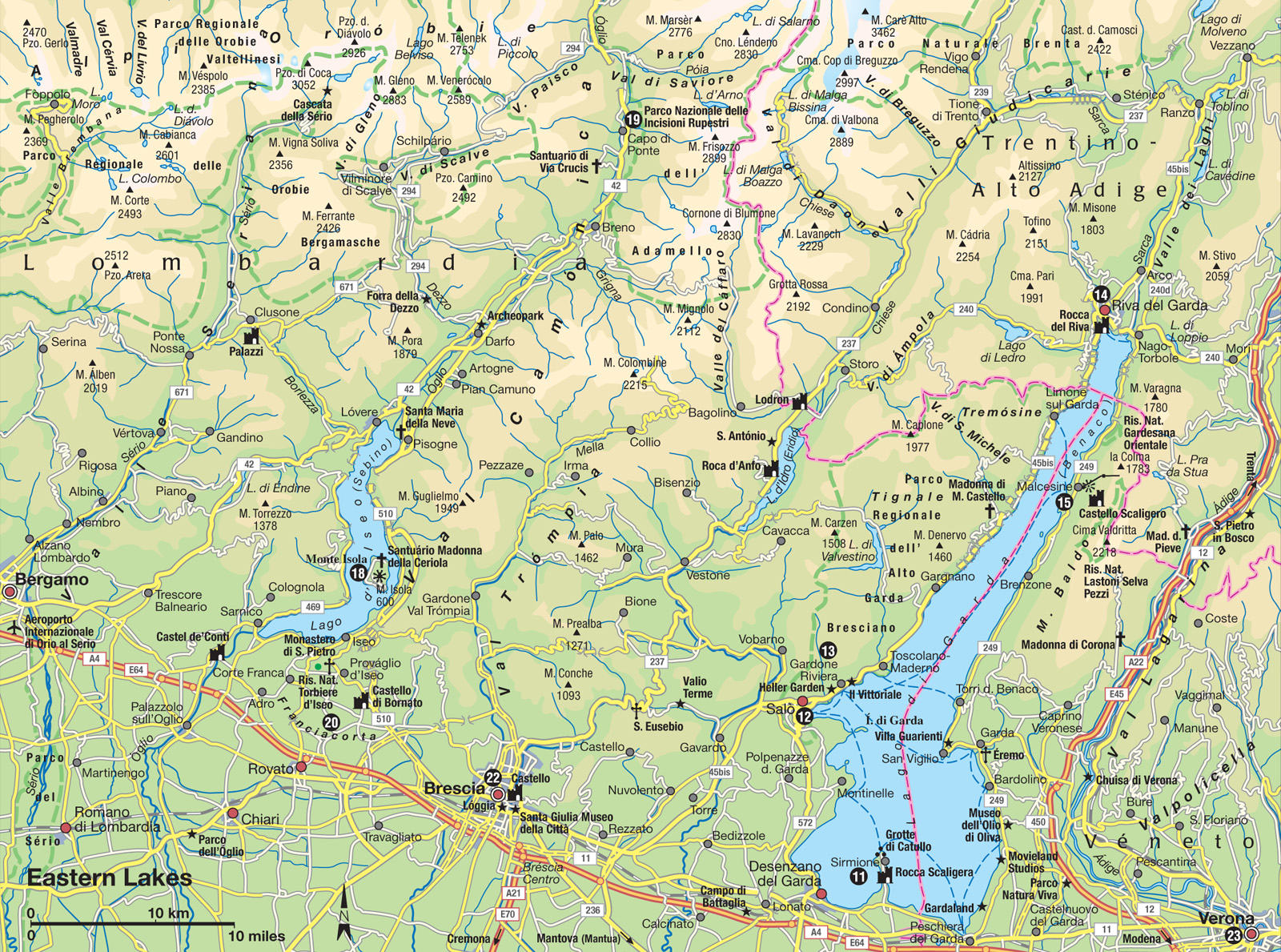
The Southern Shores
, Lake Gardas most famous resort, has an enticing setting on a narrow peninsula that juts 4km (2.5 miles) into the lake. The old town is heralded by the photogenic Rocca Scaligera (Scaligera Castle; TueSun 8.30am7pm, off season 9am4.30pm; charge), accessed via a drawbridge over the fish-filled moat. The castle was built in 1259 by Mastino I della Scala, the fishtail battlements being the trademark of the della Scala family.
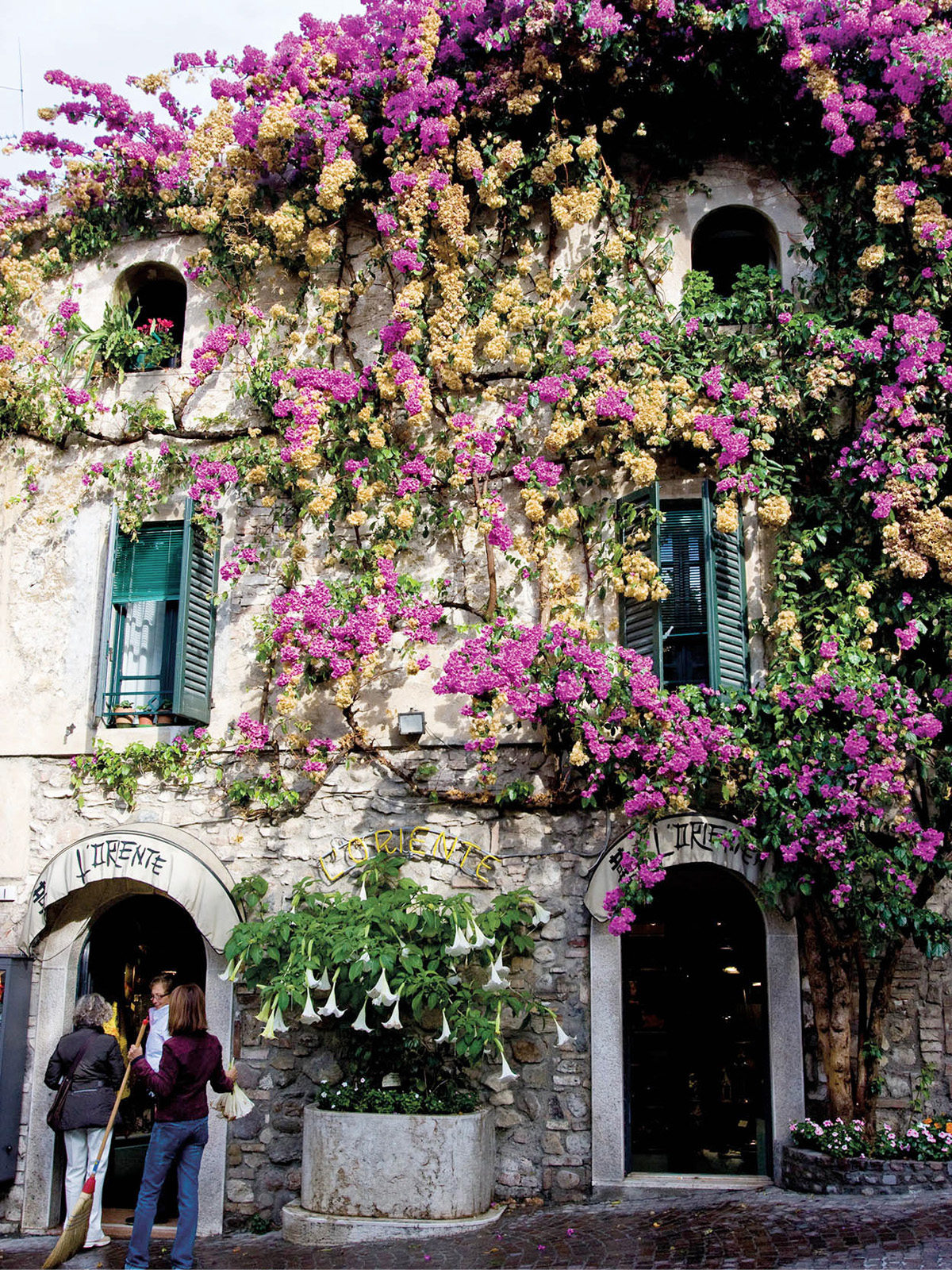
Sirmione
Neil Buchan-Grant/Apa Publications
The narrow alleys around the castle teem with tourists throughout the season Sirmione is just minutes away from the MilanVenice motorway and a mecca for day-trippers. But beyond the castle you can escape the worst of the crowds and find pleasant lakeside terraces, beaches and a headland of olive trees and cypresses. At the tip of the peninsula lies the famous Grotte de Catullo (Marmid-Oct TueSat 8.30am7pm, Sun 8.30am5.30pm, mid-OctFeb TueSat 8.30am4.30pm, Sun 8.30am1.30pm; charge), the ruins of a vast Roman villa. The site was named after the Roman poet Catullus, but although his poems make reference to a home in Sirmione there is no evidence this was his villa. The archaeological remains some of the most important of their kind in Italy cover over 2 hectares (5 acres) of the promontory, and are set high above the lake amid olive and cypress trees. Deciphering the various rooms on the various levels is not easy, but it is lovely just to wander around.

Venetian-style house in Desenzano del Garda
Apa Publications
West of Sirmione, Desenzano del Garda is the largest town on the lake, and one of the most colourful and lively. An important Roman port, it retains a 3rd-century Villa Romana (Marmid-Oct TueSat 8.30am7pm, Sun 9am5.30pm, mid-OctFeb TueSat 8.30am4.30pm, Sun 9am4.30pm; charge) with remarkable floor mosaics depicting scenes of hunting and local life. The heart of the town is the picturesque Porto Vecchio (Old Port) flanked by cafs and the venue of a large and popular Tuesday market. Behind the port, narrow lanes lead up to the medieval castle, while along the front, the promenade is pleasant for strolling.
Roman spa town
Sirmione has been a spa since Roman times. Large numbers of visitors come to its thermal establishment for treatment from the sulphurous water that emerges from a spring in the lake ( www.termedisirmione.com ).
East of Sirmione, Peschiera del Garda was a medieval stronghold of the Venetian empire. The town is still dominated by the mighty bastions of its fortress, but there is not a great deal to detain you here. Nowadays, Peschiera is associated more with amusement parks than history. Gardaland is Italys number one theme park, with 46-hectares (113 acres) of Disneyland-styled attractions, and Movieland Studios offers film-themed attractions, shows and aquatic slides and rides.
The Western Shore
North of Desenzano the town of Sal @ has a long history dating back to Roman times. In 1337 it became the capital of the Magnifica Patria, a community of 42 towns; during a less-fortunate episode in the towns history, it became the seat of Mussolinis puppet republic in 1943 his last desperate attempt to reorganise Fascism in Italy. The Art Nouveau-style Villa Simonini (now the Hotel Laurin) was the headquarters of the Italian Foreign Ministry, presided over by Il Duce . On a beautiful deep bay, and backed by the Monte San Bartolomeo, Sal is an appealing combination of bustling local town and elegant resort with no hint of its dubious history. The narrow streets and squares of the historic quarter lie behind a long lakeside promenade. The late-Gothic Duomo (daily 8.30amnoon, 36.30pm) along the waterfront, spied from afar by its distinctive bell tower, has an unfinished brick facade, with a Renaissance portal. The piazza here is the setting for summer performances of the Gasparo da Sal Festival of Music, celebrating the inventor (or perfecter) of the violin, born here in 1540.
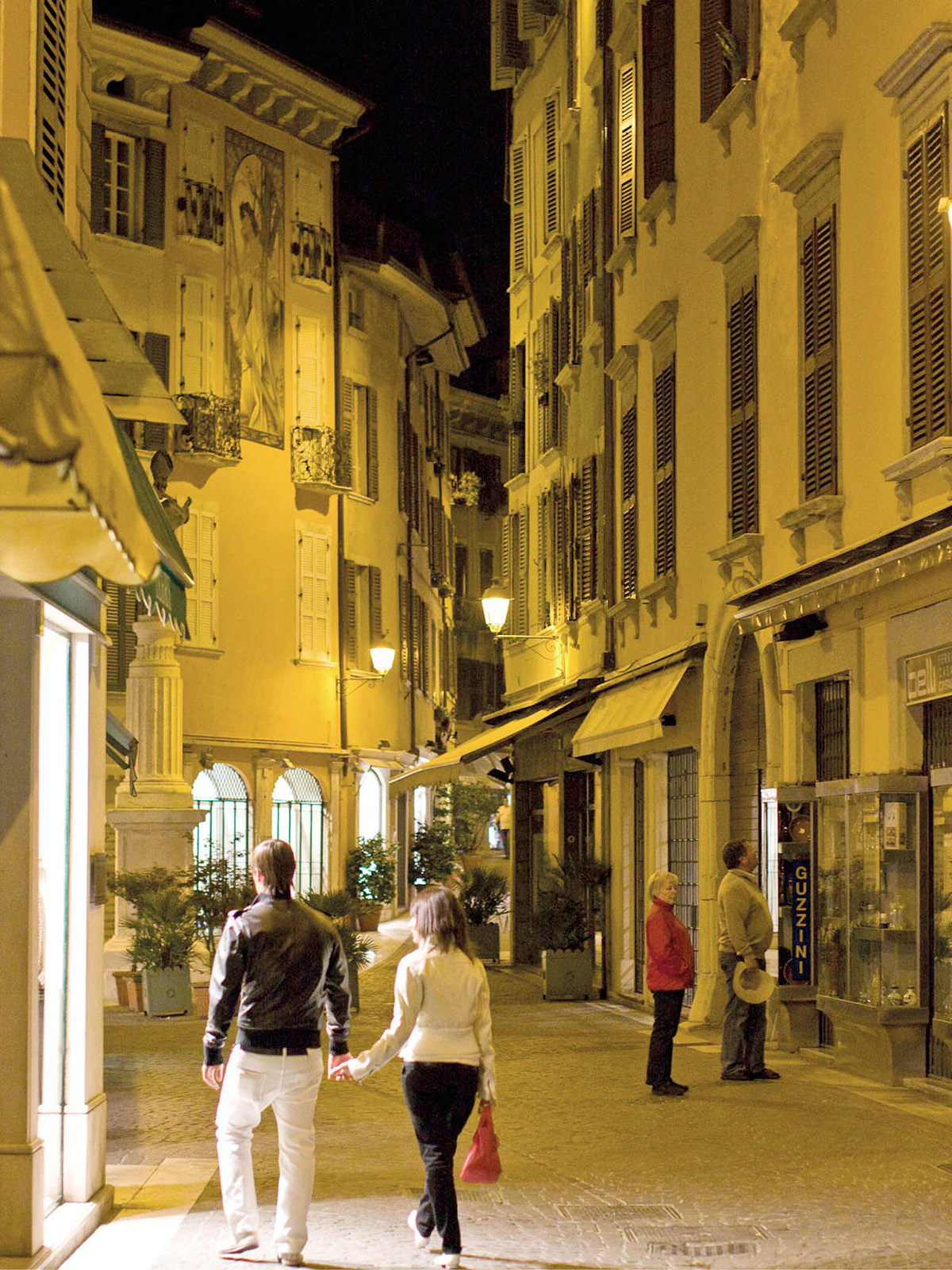
Sal scene
Neil Buchan-Grant/Apa Publications
Off the headland south of Sal lies the little, cypress-studded island of Isola di Garda . In private hands for several centuries, the island was inherited by Camillo Cavazza and the current residents are his English wife and her seven children. From May to October boats leave from Sal once a week, from Gardone Riviera twice weekly; the island can also be visited from other resorts in the lower lakes. Two-hour guided tours (occasionally given by one of the family) include the neo-Gothic villa and fine gardens, with tastings of local products such as wine and olive oil.


